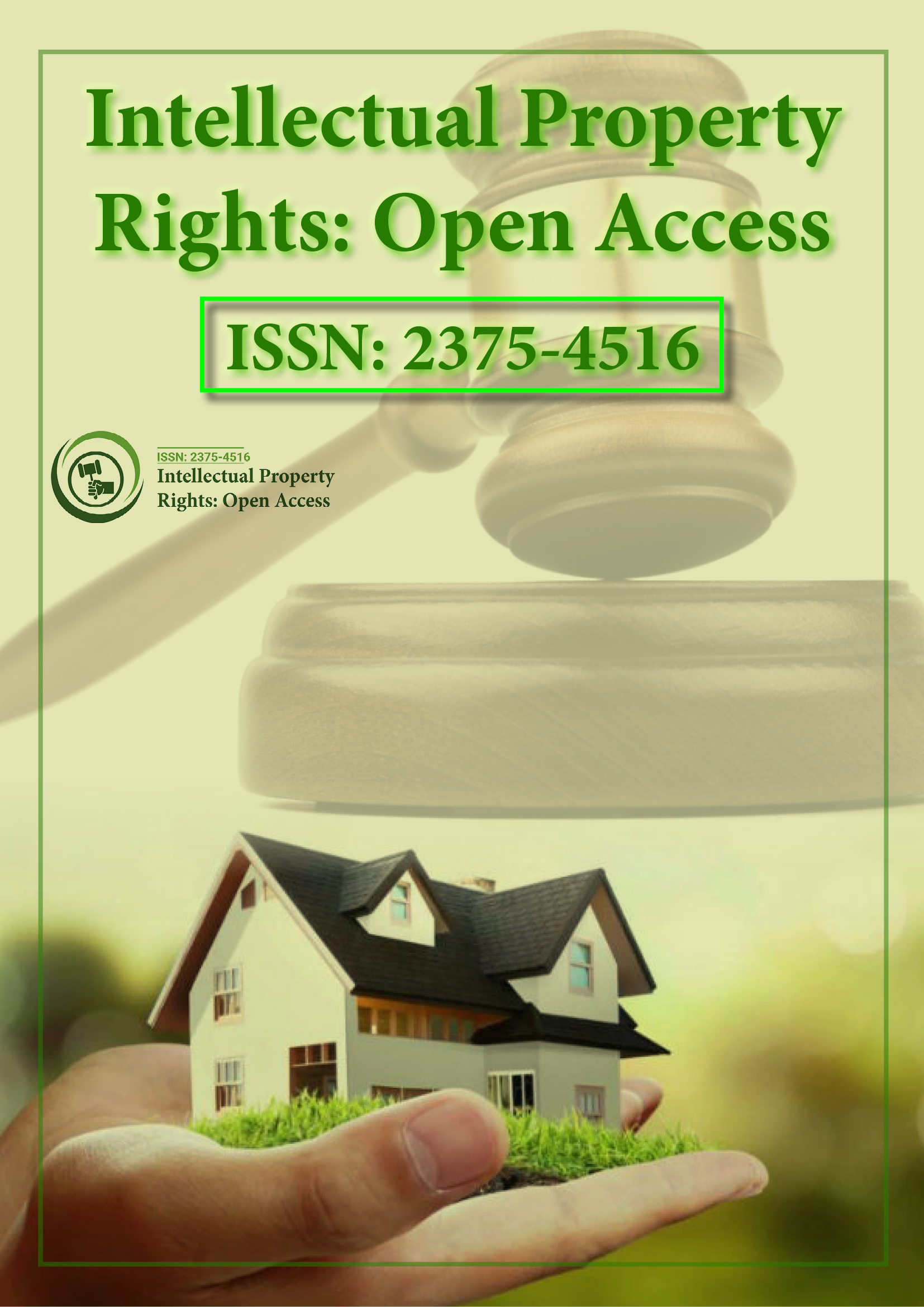Indexed In
- Open J Gate
- RefSeek
- Hamdard University
- EBSCO A-Z
- OCLC- WorldCat
- SWB online catalog
- Publons
Useful Links
Share This Page
Journal Flyer

Open Access Journals
- Agri and Aquaculture
- Biochemistry
- Bioinformatics & Systems Biology
- Business & Management
- Chemistry
- Clinical Sciences
- Engineering
- Food & Nutrition
- General Science
- Genetics & Molecular Biology
- Immunology & Microbiology
- Medical Sciences
- Neuroscience & Psychology
- Nursing & Health Care
- Pharmaceutical Sciences
Opinion Article - (2023) Volume 11, Issue 2
Patent Infringement: Understanding the Nature, Impact, and Enforcement
Mandira Ben*Received: 02-Jun-2023, Manuscript No. IPR-23-22196; Editor assigned: 05-Jun-2023, Pre QC No. IPR-23-22196 (PQ); Reviewed: 19-Jun-2023, QC No. IPR-23-22196; Revised: 26-Jun-2023, Manuscript No. IPR-23-22196 (R); Published: 03-Jul-2023, DOI: 10.35248/2375-4516.23.11.235
Description
Patent infringement refers to the unauthorized use, manufacture, sale, or importation of a patented invention without the permission of the patent holder.
Patents are legal rights granted to inventors for their inventions, providing them with exclusive rights to use and commercialize their creations for a limited period.
Understanding patent infringement
Definition of patent infringement: Patent infringement occurs when someone uses, makes, sells, or imports a patented invention without the permission of the patent holder. This includes producing a product that incorporates the patented technology or performing a method that falls within the scope of the patented claims.
Elements of patent infringement: To establish patent infringement, certain elements must be met. These typically include the existence of a valid patent, the infringement of one or more claims of the patent, and the absence of any legal defenses or exceptions.
Direct and indirect infringement: Patent infringement can be categorized as direct or indirect. Direct infringement occurs when a party explicitly uses or makes the patented invention without permission. Indirect infringement includes contributory infringement, where a party knowingly supplies or enables others to infringe, and induced infringement, where a party actively induces others to infringe the patent.
Impact of patent infringement
Economic losses: Patent infringement leads to significant economic losses for patent holders. It deprives them of the exclusive rights and financial rewards associated with their inventions. Infringing products or processes can directly compete with the patent holder's offerings, resulting in reduced market share and potential revenue.
Inhibited innovation: Patent infringement can discourage innovation by undermining the incentive for inventors to invest in research, development, and commercialization of their inventions. When inventors see their patents being infringed without consequences, it diminishes the motivation to create and disclose new technologies.
Market distortion: Patent infringement can distort markets by allowing competitors to benefit from another party's research and development efforts without bearing the associated costs. This can lead to unfair competition, market imbalances, and reduced incentives for companies to invest in new technologies.
Enforcement challenges
Complex patent claims: Patent claims can be complex and technical in nature, making it challenging to determine whether an infringement has occurred. Interpreting the scope and boundaries of patent claims requires expertise in the relevant field, and disagreements can arise between parties regarding the interpretation of patent language.
Jurisdictional issues: Patent infringement often involves crossborder activities, making enforcement complex. Different legal systems, varying levels of patent protection, and challenges in cross-border cooperation can hinder effective enforcement of patent rights.
Strategies for patent infringement enforcement
Patent monitoring and surveillance: Patent holders can employ monitoring and surveillance mechanisms to detect potential infringements. This includes monitoring competitor activities, marketplaces, and new product launches to identify any potential infringements of their patented technologies.
Cease-and-desist letters: Patent holders often send cease-anddesist letters to alleged infringers, notifying them of the infringement and demanding that they cease the infringing activities. These letters serve as initial warnings and can prompt discussions or negotiations to resolve the infringement dispute.
Alternative dispute resolution: Alternative dispute resolution methods, such as mediation or arbitration, provide alternative avenues for resolving patent infringement disputes. These processes can be less costly and time-consuming than traditional litigation, allowing parties to reach mutually acceptable resolutions.
Conclusion
Patent infringement poses significant challenges and consequences for patent holders, innovation, and market dynamics. It deprives inventors of their exclusive rights and financial rewards, inhibits innovation, distorts markets, and can compromise consumer safety. Enforcement of patent rights requires overcoming challenges such as complex patent claims, jurisdictional issues, and the high costs of litigation. By employing monitoring mechanisms, utilizing alternative dispute resolution methods, and strategically leveraging licensing agreements, patent holders can take steps to protect their inventions and enforce their patent rights. Strong patent enforcement is essential for fostering innovation, incentivizing research and development, and ensuring fair competition in the marketplace.
Citation: Ben M (2023) Patent Infringement: Understanding the Nature, Impact, and Enforcement. Intel Prop Rights. 10:235.
Copyright: © 2023 Ben M. This is an open access article distributed under the terms of the Creative Commons Attribution License, which permits unrestricted use, distribution, and reproduction in any medium, provided the original author and source are credited.
